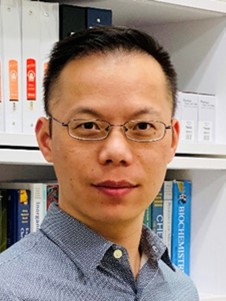Date
Location
Research 1: R1-101
Description
Electrocatalytic hydrogenation has received increasing attention as a promising approach in producing value-added chemicals using water as the hydrogen source. However, its broad employment is restricted by the large voltage requirement and low energy conversion efficiency because of the sluggish anodic reaction such as O2 evolution, whose product O2 is not of significant value. We demonstrate that the low-potential oxidation of formaldehyde to formate is a more appealing anodic reaction with extremely small oxidation potential and the concomitant production of hydrogen at anode. By taking advantage of the excellent hydrogen absorption and permeation characteristics of palladium membrane electrodes, we further demonstrate that it is possible to perform electrocatalytic dual hydrogenation of organics when another palladium membrane is also adopted as the cathode. The second portion of this presentation will introduce our efforts in photochemistry using two-photon-absorbing (TPA) chromophores. We recently developed a number of TPA chromophores active in the near infrared (NIR) region. Using these new TPA complexes, a variety of organic transformations and bioimaging studies could be carried out under NIR light irradiation.
Biography: Yujie Sun received a B.S. degree in Chemistry from Fudan University in 2005. He then pursued graduate studies in inorganic photochemistry with Prof. Claudia Turro at The Ohio State University and obtained his Ph.D. degree in 2010. Subsequently, he joined the group of Prof. Christopher J. Chang at the University of California, Berkeley and Lawrence Berkeley National Laboratory as a postdoctoral scholar, working on renewable energy catalysis. Yujie started his independent career as an Assistant Professor at Utah State University in 2013, moved to the University of Cincinnati as an Associate Professor in 2018, and was promoted to Professor in 2023. His group is interested in developing and understanding novel complexes and materials for energy catalysis and biomedical applications.
Presenter

Yujie Sun, Ph.D.
Department of Chemistry
University of Cincinnati
Cincinnati, Ohio
Contact
Yang Yang, Ph.D. NanoScience Technology Center Yang.Yang@ucf.edu